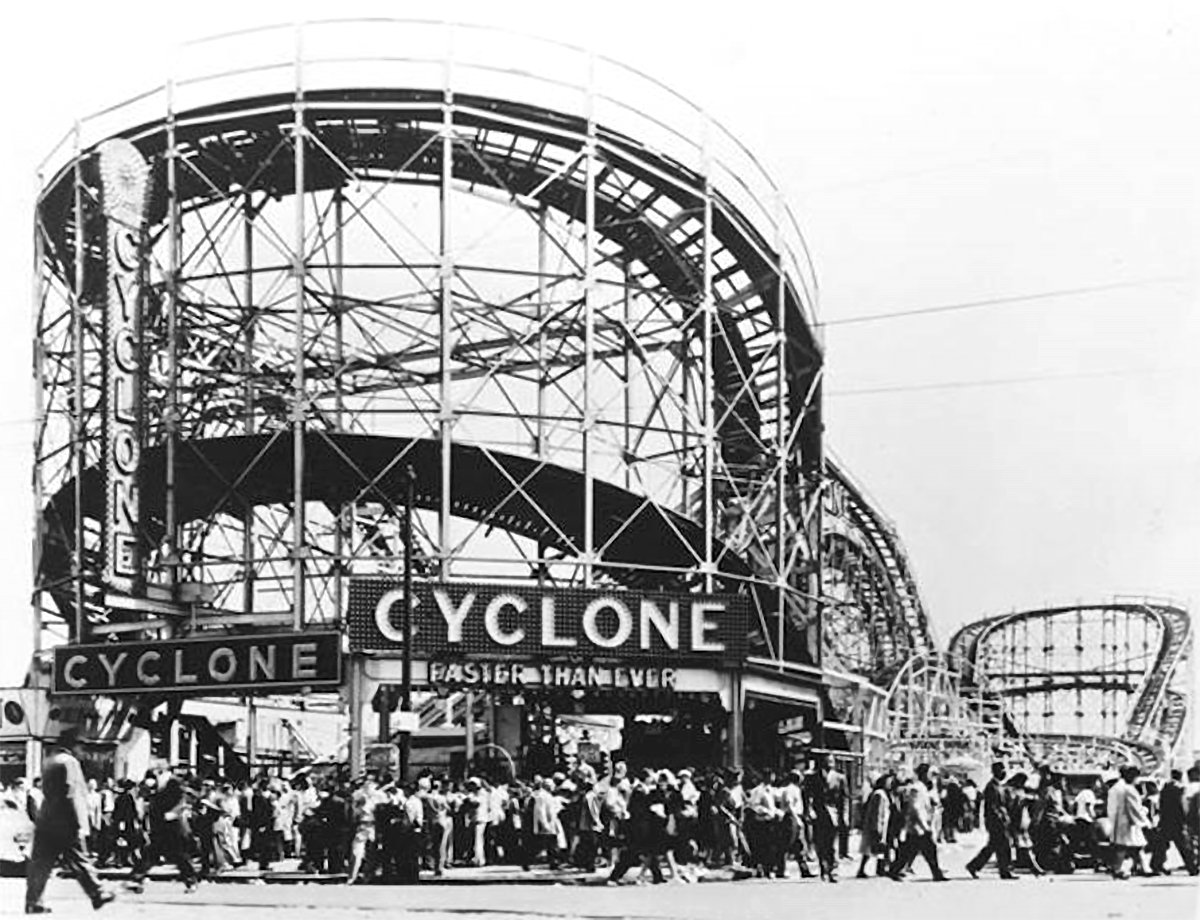The Verticality of Roller Coasters
Historic photo of the iconic Cyclone roller coaster at Coney Island, in New York City. It was built in 1927 and is one of the most recognizable roller coasters in the world.
One of the most visceral sensations a human can experience is a sudden fall. This quick, downward acceleration of the human body can evoke feelings of terror if it’s unplanned or unwanted, or feelings of thrill and delight when it’s expected or wanted. For most of us, the sudden pull of gravity conjures up all these feelings at once. Roller coasters tap into this concept, and they meticulously curate it in order to maximize these feelings for their riders. A ride on a roller coaster pushes and pulls your body in myriad different directions, allowing a rider to experience gravity-like forces in many different directions. It’s an experience rooted in verticality, which is what gives them such appeal for modern humans.
A traditional roller coaster has two main phases. The first is the ascent, and the second is the descent. The ascent brings riders up to a high place, usually at a slow and measured speed. This is followed by the descent, which uses gravity to bring riders back to the ground. The descent can be quite long and complex, and it’s where all the pushing and pulling takes place. After descending, the ride is typically over.
The Promenades-Aeriennes, which was one of the world’s first roller coasters. It was located in Paris and built in 1817.
Early roller coasters were simple rides without much complexity. Pictured above is one of the world’s first roller coasters. It’s called the Promenades-Aeriennes and it was built in Paris in 1817. It features two symmetrical tracks, with an ascent along a central track, along with two long, flowing descents around both edges. It’s quite tame by today’s standards, but it was immensely popular with the public; soon after its construction there were plenty of copycats around. This is because it provided the public with a new experience. They could climb to a high place, and then descend back to the ground while feeling the thrill of acceleration and the push and pull of the turns. This was all done at minimal risk, which made it all the more enjoyable.
Compare the Promenades-Aeriennes to the coaster at the top of this post, which is much higher and more complex. It’s the Cyclone coaster in New York City, and it’s one of the world’s most iconic roller coasters. Even with its greater complexity, the basic concept remains the same. There’s an initial climb, followed by a descent that includes a series of dips, turns and hills. The experience, though longer and more complex than the Promenades-Aeriennes, is still rooted in verticality, with the simultaneous thrill and terror of a fall at its core.
Postcard showing the Derby Racer roller coaster at Euclid Beach Amusement Park, circa 1920.
Throughout the years, roller coasters have gotten bigger, faster, and more intense. Their allure remains the same, however. They allow riders to feel gravity-like forces from many different directions and provide a sense of condensed verticality as a result. These are sensations that don’t exist in the natural world, apart from a fall from a high place. A fall such as this would normally injure or kill someone, and this is the root of a roller coaster’s appeal. They provide atypical sensations that are traditionally associated with great danger, but they do it in a relatively safe way.
Check out other posts that mention a fear of heights here.



